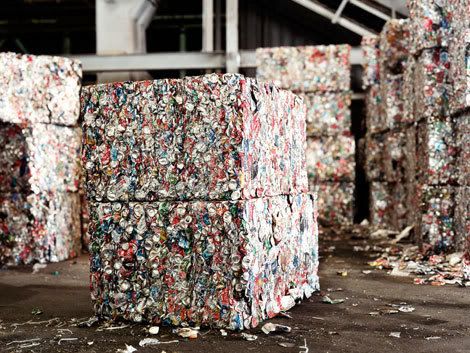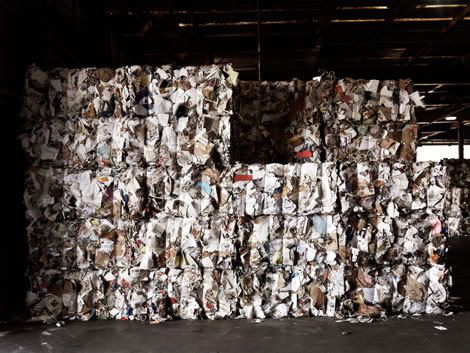Introduction
The United States Environmental Protection Agency (EPA) defines Municipal Solid Waste (MSW) as “everyday items such as product packaging, grass clippings, furniture, clothing, bottles, food scraps, newspapers, appliances, and batteries” but this excludes items such as “construction and demolition materials, municipal wastewater treatment sludges, and non-hazardous industrial wastes”. [1]

Data Source: [1]
Further more, the EPA has established four main methodologies for managing MSW: source reduction, recycling, combustion with energy recovery, and disposal. Source reduction is essentially “reducing the amount of waste created” through various methods including product and package re-design, repurposing existing products and packing through reuse, extend product life to reduce the volume of the waste stream, and composting organic material instead of including it in the waste stream.[1] We'll go more in depth on all these processes in a bit.
How Much Does the United States Recycle?
The EPA has been tracking information on the management of MSW since 1960. In 2007, the United States generated 254.1 million tons of MSW. Of that 254.1 millions tons, 137.2 million tons were landfilled, 31.9 million tons were combusted for energy recovery, and 85 million tons were recycled.[1]

Data Source: [1]

Data Source: [1]

Data Source: [1]
Since 1960, there has been a positive trend in the amount of MSW that has been recycled annually. This translates into a discard rate of 2.50 pounds of waste per day per capita (after recycling and combustion).[1]
Access to residential curbside recycling programs has an undeniable affect on the average individual’s propensity to recycle. According to the EPA, only 60% of the US population had access to such programs, with availability varying drastically by region.

Data Source: [1]
Compared to the rest of the nation, the South has the largest population by region (84.5 million, compared by 50.6 million in the Northeast, 46.5 million in the Midwest, and 64.0 million in the West) yet the availability of curbside recyclable collection programs in that region lags well behind of the other regions. [1]
Why do we need to recycle?
Environmental Impact

Photo taken in the SCILS Building, Rutgers University.

"Every ton of plastic bottles recycled saves ~3.8 barrels of oil."[2]
Image source: [2]

"Indefinitely recyclable, aluminum is back on the shelf as a brand-new beverage container only six weeks after it hits the recycle bin."[2]
Image source: [2]

"Each ton of recycled paper saves 17 trees, 225 kilowatt-hours of electricity and 60,000 gallons of water."[2]
Image source: [2]
Economics

Data Source: [3]
What Can We Do About It?
Recycling
As mentioned above, recycling is a very important part of managing MSW. As it stands now, only 34% of MSW is exiting the waste stream through recycling and only 60% of Americans have access curbside recycling. For a large majority of materials entering the waste stream, recycling can save a significant amount of energy compared to sourcing virgin materials. Decreased energy consumption is not only good for the environment, but it saves money as well. So when you can, make sure to buy goods made from recycled material. Also, make sure to check ANYTHING made from plastic. Items such as plastic cups, deodorant containers, contact lens containers, and plastic take-out bags (read: things you usually throw out) are typically recyclable. Just make sure your local recycling center accepts that specific resin code before you toss it in the recycling bin.
Source Reduction
When you hear the word “recycle,” I'm sure you typically envision the follow process: 1) use a plastic container, 2) send it to a recycling center to be sorted, 3) the container is then melted down and turned into another container. Sadly this is not always the case. In fact, most of the time plastic goes through a process referred to as “downcycling,” where common plastics (like milk jugs and soda bottles) are converted in larger durable items like weatherproof decking, polyester, or carpeting
[2], and oftentimes these materials are difficult or impossible to recycle, which means they inevitably end up in a landfill. Because of issues like downcycling and the relatively low recycling rates across the country, reducing the amount of waste you produce on a daily basis is paramount. This can be achieved in a number of ways, such as reuse, replacing throw-away items with reusable items, and composting.
The theory behind reusing a throw-away item is extending the life of an item to delay it’s entry into the waste stream. One example of this would be the plastic bags that you get from the grocery store. Ultimately it would be better if we didn’t have plastic bags at all due to the amount of resources they consume, but reusing these plastic bags at home for small garbage bags or other uses help to justify the bag’s existence simply because you’re getting two uses out of small intended to be used once and thrown away.
The topic of plastic bags brings me to my next topic: replacing throw-away items with durable, reusable items. Replacing a plastic, throw-away grocery bag with a reusable canvas bag not all reducing the amount of plastic bags entering the waste stream, but grocery store will typically give you a small discount for the use of reusable bags. Another area where we can stand to substantially reduce the amount of MSW entering the waste stream is the coffee industry. For example, in 2006, Starbucks reported that their stores used 2.3 billion paper cups to serve coffee [4]. Even though Starbucks has recently starting issuing cups made from 10% post-consumer fiber (this number is kept low due to health concerns and the FDA)[5], this still translates into 30 million pounds of waste entering landfills, 780,000 trees cut down, 580 Million BTUs (enough to power 6400 homes), and 470 million gallons of water used [4]. And that’s just Starbucks! These cups have to be landfilled, as opposed to recycled, because the inside of the cup is coated in a thin layer of plastic to helps to avoid leakage and keeps the beverage warm. In order to reduce this unncessary amount of waste, the author strongly suggests purchasing a reusable mug for use at coffee shops. Studies indicate that after 24 uses, a stainless steel mug will “break even” with a paper cup.
The last thing I’ll mention is the topic of composting. The EPA estimated that in 2007, “food scraps and yard trimmings combined made up about 25% of MSW generation” (EPA). And most, if not all, of it can be composted! I won’t get into the science and methodologies behind composting, but suffice it to say, it's fairly straight forward. There a few different options for composting as well; you can compost at home the old fashioned way or using some fancy new technology, you can take your compostables to you community recycling center (if offered), or you can partake in what is known as vermicomposting (using worms instead of aerobic bacteria like in regular composting) if space is an issue for you. I find composting really exciting simply because it’s an idiotically easy way to drastically reduce the annual amount of MSW. Hell, it’s easier than disposing garbage! Here’s a quick list of just a few of the things you can recycle: coffee grounds/filter, paper towels, newspaper, veggie scraps, egg shells, and pizza boxes (you can’t recycle those!). In reality, the list of compostable items is quite long.
Conclusion
The reality of the situation is that there is no way we can ever reduce the environmental impact of humans to zero; our existence is defined and dependent upon our consumption of the resources Earth provides us. We can, however, take action towards a (relatively) sustainable lifestyle to help lessen our negative impact. Simple things like reusing plastic containers to extend their life and switching to resuable coffee mugs, if done on a large scale, have the ability drastically change the amount of MSW generated every year. Recycling and reuse not only saves resources and reduces waste, but it saves everyone money as well.
Resources:
[1] Muncipal Solid Waste in The United States: 2007 Facts and Figues. November 2008. http://www.epa.gov/epawaste/nonhaz/municipal/msw99.htm
[2] Is Recycling Worth It? PM Investigates its Economic and Environmental Impact. December 2008. http://www.popularmechanics.com/home_journal/how_your_house_works/4291566.html?page=1
[3] Recycling By the Numbers: The Truth About Recycling. December 2008. http://www.popularmechanics.com/home_journal/how_your_house_works/4291576.html
[4] The Basic Problem with Coffee Cups. n.d. http://sustainabilityissexy.com/facts.html
[5] Creating the Eco-Cup. September 19, 2006. http://money.cnn.com/magazines/fortune/fortune_archive/2006/10/02/8387528/index.htm
















